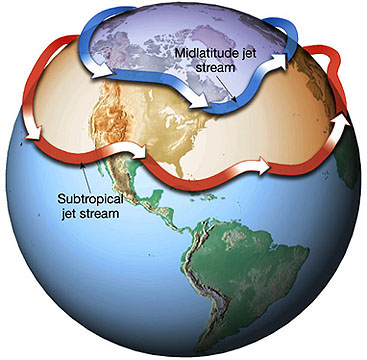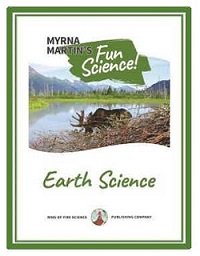What is a Polar Front?
A polar front is an area where cold polar air mass meets warm tropical air masses. The line between these two air masses can be thousands of miles long. The temperature in the two air masses is very different. The Arctic air mass is much colder than the tropical air masses that have moved up from tropical regions. The boundary between the two air masses is stationary.

Map showing jet streams that are the boundaries between warm and cold air fronts. NASA
air flowing from the arctic
Stationary front
The stationary front is an area where the cold Arctic air keeps flowing down to lower latitudes. The warm tropical air keeps moving up into higher latitudes. The stationary front remains in one place between the two air masses.
Front of polar air shifts
The polar front shifts toward the equator in the winter time. Its average position is about 30 degrees latitude in the winter. During the summer the front shifts northward to about 60 degrees latitude when high pressure dominates.
Northeast coast front
The stationary front off the United States northeast coast is between the land and the ocean. The sharp difference in temperature is caused by the snow covered land and the warm ocean currents flowing up from the equator.


Click for More Information and to Order
norwegians study wave cyclones
Wave cyclones
Norwegians studying the weather during World War I came up with a theory that explained how wave cyclones originated in the middle latitudes instead of the tropics.
Middle latitude winds
These middle latitudes are areas where the air near the surface is constantly changes as air from the north and south come together. These regions usually have light winds and dry conditions.
Norwegian's wave theory
The Norwegians came up with the wave theory to explain cyclones that form along this front. A small bulge of warm air creates a "kink" in the stationary front. This leads to the winds twisting as the air masses meet and the Earth's rotation causes cyclones to form in this region instead of the tropics.
KIDS FUN Science Bookstore
Check out Myrna Martin's award winning textbooks, e-books, videos and rock sets. The Kids Fun Science Bookstore covers a wide range of earth science topics. Click here to browse.










